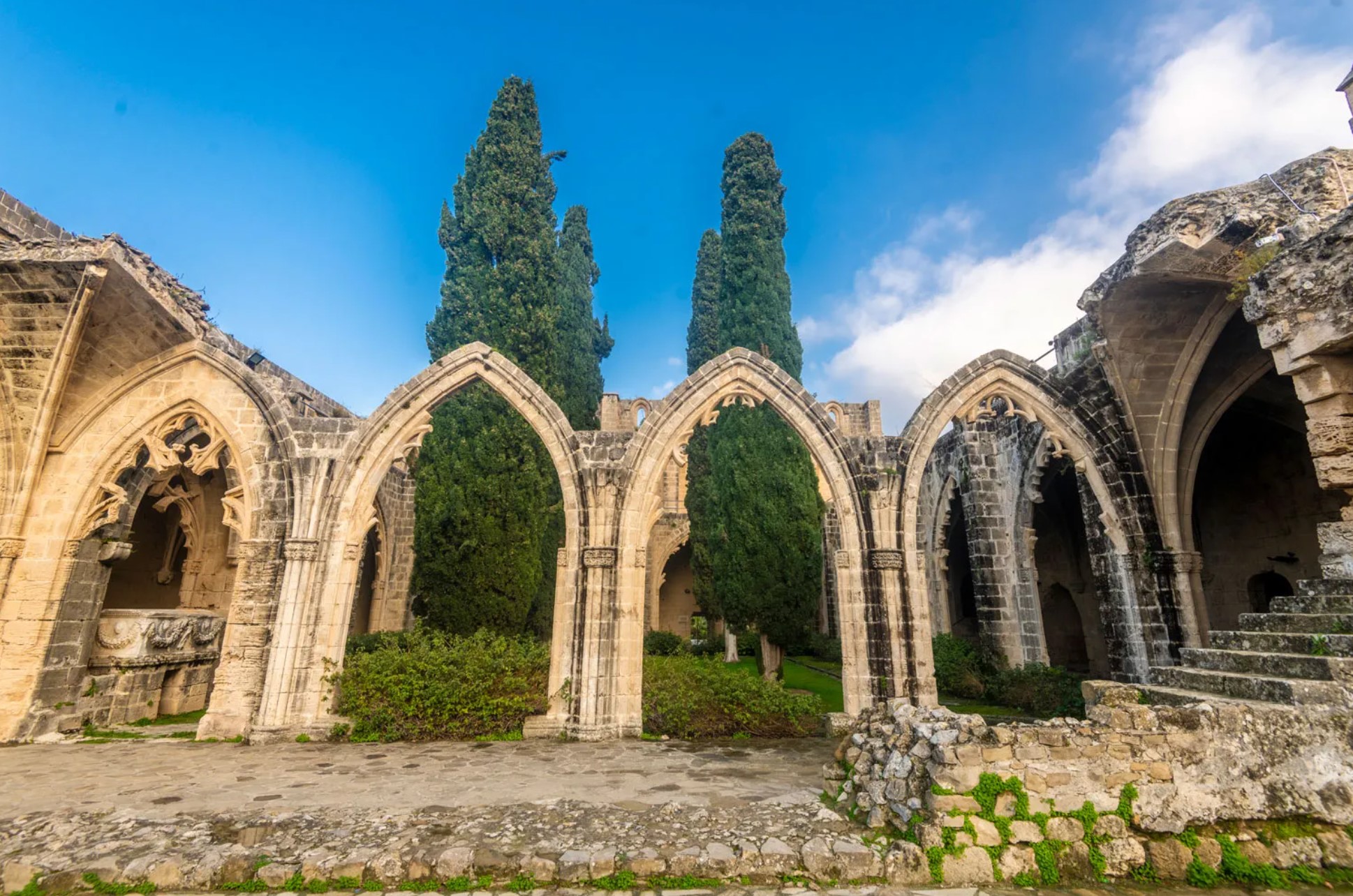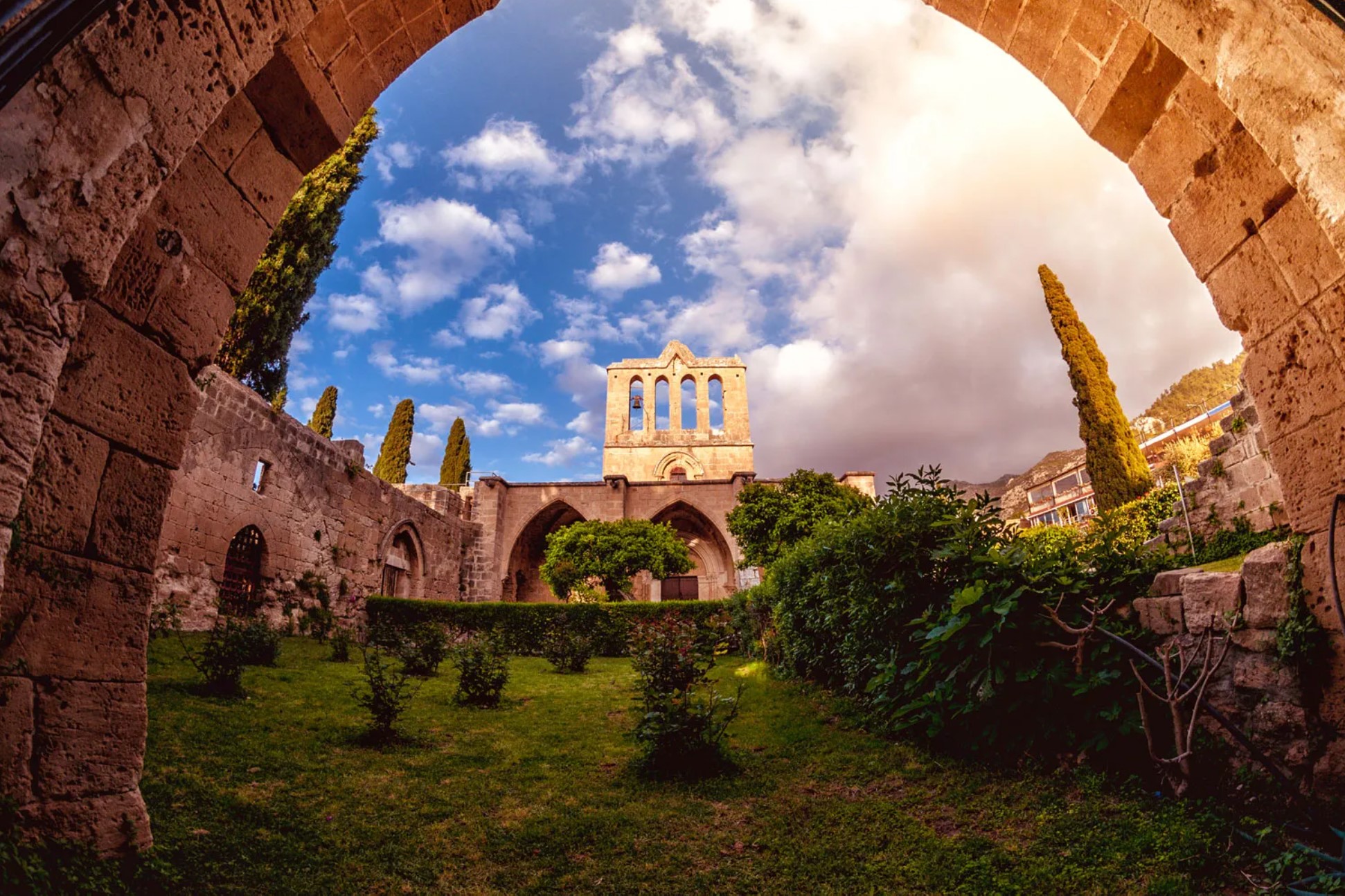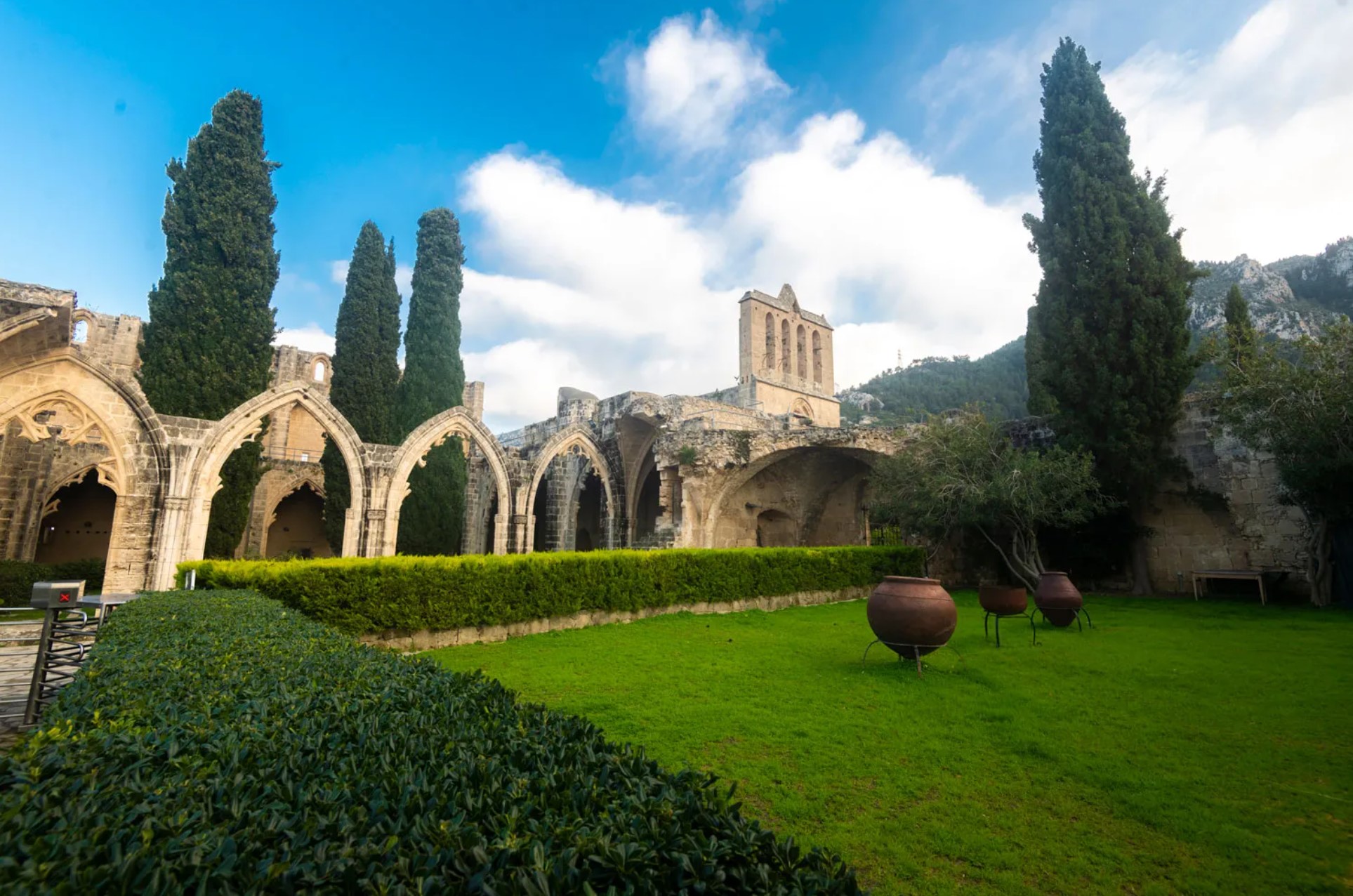


Bellapais Abbey is the ruin of a monastery built by Canons Regular in the 13th century on the northern side of the small village of Bellapais. The ruin is at an altitude of 220 m above sea level and commands a long view down to Kyrenia and the Mediterranean Sea. The site is also a museum, which hosts a restaurant and a cafe. The Abbey's refectory now serves as a venue for concerts and lectures. In early summer it is also a venue for a local music festival. The village is serenity itself, a step back to a time when the hustle and bustle of modern times would have been anathema to those lucky enough to live amongst its quiet lanes and whitewashed houses. Indeed, the name Bellapais comes from the French ‘belle paix’, which translates as ‘beautiful peace’.
The site was formerly named Episcopia or Piscopia, suggesting that it may have served the Bishop of Kyrenia as a residence, and as a place of refuge from Arab raids in the 7th and 8th centuries. The first occupants known to have settled on or near the site were the Canons Regular of the Holy Sepulchre, who had fled Jerusalem after its fall in 1187 to Saladin. The canons had been the custodians of the Church of the Holy Sepulchre.
Aimery de Lusignan founded the monastery, with the first buildings dating to between 1198–1205. The abbey was consecrated as the Abbey of St. Mary of the Mountain. The White Canons (Norbertines or Premonstratensians) succeeded the founding canons in 1206. Consequently, documents from the 15th and 16th centuries refer to Bellapais as the "White Abbey". The common explanation of the modern name Bellapais is that the French name Abbaye de la Paix ("Abbey of Peace") was corrupted after the Italian takeover into "Bellapais", reinterpreted as Bella Paese's "Beautiful Land". The main building as it can be seen today was built during the rule of King Hugh III 1267–1284. The cloisters and the refectory were constructed during the rule of King Hugh IV between 1324–1359. Hugh IV lived in the abbey and had apartments constructed for his use.
In 1373, the Genoese raided Kyrenia, almost destroying Kyrenia Castle. The Genoese stripped Bellapais of anything that was portable and of any value. By 1489 the Venetians had taken control of Cyprus. By the time of the Venetians, the inhabitants of the Abbey had abandoned the Premonstratensian Rule. Reportedly, canons took wives, and then to keep the business within the family, accepted only their children as novices.
Following the Ottoman conquest of Kyrenia and Kyrenia Castle in 1571, the Ottomans expelled the Premonstratensians and gave the abbey to the Greek Orthodox Church of Cyprus, which they appointed as the only legal Christian church in Cyprus. The Church of Cyprus neglected the Abbey, which fell into disrepair. However, the abbey church itself came to serve as the parish church for the village that grew up around it, and whose inhabitants may have used the abbey as a quarry for stone. During the period of British control of Cyprus (1878-1960), the British Army initially took control of Bellapais. In 1878 they cemented the floor of the refectory, which they then used as a hospital. Unfortunately, the soldiers also fired off small arms in the refectory; one may still see bullet holes in the east wall. Then in 1912 George Jeffery, Curator of the Ancient Monuments of Cyprus undertook repairs of the abbey.
The world-famous English author Lawrence Durrell who wrote the book “Bitter Lemons” whilst living in Bellapais village between 1953-1956, constantly mentioned his admiration for the abbey, which he lived next to and is also an attraction for visitors.
